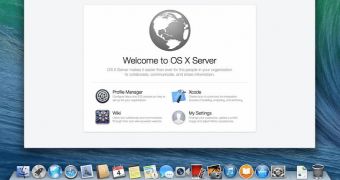Despite releasing OS X Server 3.1 days ago, Apple only now posted the full documentation regarding this update. Some previously unknown changes are mentioned in KB article HT6159, such as modifications to Caching service and some Mail fixes.
First and foremost, Apple points out that OS X Server 3.1 updates OS X Server v3.0, v3.0.1, v3.0.2, and v3.0.3 to v3.1, and that any of these installments require OS X Mavericks v10.9.2 or later. The company is known to be actively testing OS X 10.9.3 internally.
Customers are offered proper instructions on how to download and install the new OS X Server.
“OS X Server v3.1 is available from the Mac App Store. It appears in the Updates pane if you have OS X Server (Mavericks) installed. Click the Update button to install it,” Apple says.
Server updates are not automatically installed, as a precautionary measure to prevent the interruption of services. Other updates can, however, be installed automatically from the Mac App Store (such as third-party app updates).
“During installation you may see the message ‘Server app replacement detected.’ This is a normal part of the update process. All Server settings and data are preserved during the update,” Apple explains.
Customers must open Server app after the update finishes installing in order to complete setting up their previously-configured services. Apple then proceeds to outline the changes in the Server 3.1 update, which has been in testing for the past two months.
Apple says right off the bat that “Server v3.1 improves the general stability of OS X Server and delivers the following specific improvements.”
One major component touched by this update is Profile Manager. Apple has added support for the Device Enrollment Program, a move that has been expected for quite some time, as well as management of Activation Lock on supervised iOS 7.1 devices.
The update includes management of fonts and AirPrint, Wi-Fi Hotspot 2.0 and Desktop Picture settings, improved scalability when syncing with large directories, and enhanced permissions for accessing My Device portal and for device enrollment.
User profiles for Active Directory now matter on OS X v10.9.2 computers and uploading a login script is now supported. Resiliency is improved if a remote directory server becomes unavailable.
Under “Additional Services,” Apple mentions a trio of changes that were previously undocumented.
“Caching service now indicates if certain content cannot be cached in your country,” “Fixes a problem with Mail service that could cause it be shown as active when it was not,” and “Improves reliability of editing Calendar events with many invitees.”

 14 DAY TRIAL //
14 DAY TRIAL //